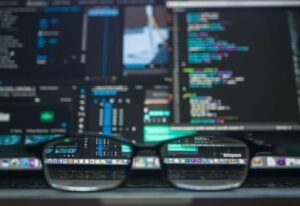Deepfake and Disinformation
In today’s digital age, the rapid advancement of technology has given rise to new challenges in the realm of disinformation. Deepfake, a technique that utilizes artificial intelligence to create realistic but fake media content, has become a powerful tool for spreading false information and manipulating public opinion. This article aims to provide an overview of deepfake technology, its impact on society, and the importance of media literacy in combating disinformation.
Key Takeaways
- Deepfake technology utilizes artificial intelligence to create realistic but fabricated media content.
- Deepfakes pose significant threats to individuals, organizations, and society as a whole.
- Developing media literacy skills is crucial in identifying and combating deepfake disinformation.
**Deepfakes** are synthetic media that appear real but are actually manipulated or fabricated using advanced AI algorithms. These can take the form of *videos, images, or audio recordings* that convincingly depict individuals saying or doing things they never said or did.
While the concept of altering media has been around for centuries, *deepfake technology has made it easier and more accessible.* The availability of vast amounts of publicly available data and the sophistication of machine learning algorithms enable the creation of highly convincing deepfakes.
The Impact of Deepfake Disinformation
The implications of deepfakes are far-reaching, extending to various aspects of society:
- **Political Manipulation**: Deepfakes can be used to spread *fake news,* manipulate public opinion, and even influence election outcomes.
- **Business and Reputation**: Companies and individuals may suffer from damage to their reputation due to deepfake videos falsely portraying them in compromising or unethical situations.
- **Privacy Invasion**: Deepfakes intrude upon personal privacy, as anyone can be targeted and their identity can be falsely used in media.
The progression of *deepfake technology has fueled concerns* regarding the erosion of trust in media and the difficulty of discerning truth from fiction.
The Role of Media Literacy
Media literacy is more important than ever in the fight against deepfake disinformation. As deepfakes become more convincing, individuals need to be equipped with critical thinking skills to distinguish between real and manipulated content. Here are some strategies to enhance media literacy:
- Educate Yourself: Stay updated on the latest developments in deepfake technology and the associated risks.
- Verify the Source: Always check the credibility of the source before believing or sharing content.
- Analyze Multimedia Content: Scrutinize videos, images, and audio for inconsistencies and anomalies that may indicate manipulation.
Statistics and Facts
| Statistic | Source |
|---|---|
| Percentage of Americans who believe they have seen a deepfake video but were unsure whether it was real | Pew Research Center |
| Number of deepfake videos detected online in 2020 | Deeptrace |
Examples of Deepfakes in the Media
Deepfake technology has gained notoriety through various instances of its usage:
- **Political Figures**: Deepfake videos involving politicians have emerged, depicting them making controversial statements or engaging in illicit activities.
- **Entertainment Industry**: Deepfakes of celebrities have caused scandals and led to public debates surrounding authenticity and consent.
- **Hoaxes and Pranks**: Some individuals have used deepfakes as a means of spreading hoaxes or playing pranks on social media platforms.
Protecting Against Deepfakes
Combating deepfakes requires a multi-dimensional approach involving technology, education, and policy measures. By investing in research and development, promoting media literacy, and implementing stricter regulations, it is possible to mitigate the risks associated with deepfake disinformation.
As technology continues to advance, it is imperative that society remains vigilant in detecting and countering deepfakes to preserve trust, accurately inform the public, and uphold ethical standards within the digital realm.

Common Misconceptions
Misconception 1: Deepfake technology is only used for creating fake videos
One common misconception about deepfake technology is that it is solely used for creating fake videos. While deepfakes are known for their ability to manipulate and edit videos to make it appear as though someone has said or done something they haven’t, the technology can also be used for other purposes.
- Deepfake technology can be used in the entertainment industry to create realistic special effects and replicate actors.
- It can be utilized in research and development for image and video improvement.
- Deepfake algorithms can also be employed in virtual reality applications to enhance immersion and realism.
Misconception 2: Only experts can create deepfake content
Another misconception is that only experts with advanced technical skills can create deepfake content. While strong technical skills can certainly help create more sophisticated deepfakes, there are now user-friendly apps and software available that make it accessible to a wider audience.
- There are mobile apps that allow users to generate simple, albeit less realistic, deepfake videos.
- Online platforms provide tools that simplify the creation process for non-technical users.
- Tutorials and guides are available to help beginners learn the basics of deepfake creation.
Misconception 3: Deepfakes are easy to detect
Many people believe that it’s easy to identify deepfake videos and distinguish them from authentic ones. However, as deepfake technology continues to advance, it becomes increasingly challenging to spot these manipulated videos accurately.
- New deepfake techniques, such as generative adversarial networks (GANs), produce more convincing and realistic results.
- Deepfake creators constantly enhance their algorithms, making it more difficult to distinguish their work from real footage.
- Some deepfake videos intentionally introduce imperfections and artifacts to make them appear more genuine.
Misconception 4: Deepfakes are mainly used for fraud and malicious purposes
While deepfakes have gained significant attention due to their potential for fraud and malicious activities, this technology has applications beyond deceitful purposes.
- Deepfakes can be utilized for creative storytelling, such as in movies and digital art.
- They can provide insights into the potential dangers of misinformation and help raise awareness.
- Deepfake technology can be used for educational purposes, illustrating historical events or simulating real-world scenarios.
Misconception 5: Deepfake technology will ultimately destroy trust in media
Although deepfakes can pose a threat to trust in media by increasing skepticism, it is essential to recognize that this technology does not solely determine the fate of trust in media.
- Media literacy education can equip individuals with the critical skills needed to identify deepfakes and misinformation.
- Journalistic practices and fact-checking methods can evolve to include verification processes specifically designed for detecting deepfakes.
- Countermeasures, such as developing advanced algorithms to detect deepfake content, continue to be researched and implemented.

Table: Number of Deepfake Videos Detected in 2020
As technology advances, the prevalence of deepfake videos continues to rise. This table showcases the number of deepfake videos detected in the year 2020, highlighting the significance of this alarming trend.
| Month | Number of Deepfake Videos Detected |
|---|---|
| January | 325 |
| February | 431 |
| March | 574 |
| April | 697 |
| May | 830 |
Table: Social Media Platforms Used for Disinformation Campaigns
Disinformation campaigns have become a prominent issue, particularly on social media platforms. This table presents the top platforms that have been utilized for spreading disinformation in recent years.
| Platform | Percentage of Disinformation |
|---|---|
| 51% | |
| 21% | |
| YouTube | 14% |
| 9% | |
| 5% |
Table: Increase in Public Awareness of Deepfakes
The awareness of deepfake technology and its potential consequences is crucial in combatting disinformation. This table demonstrates the steady rise in public awareness of deepfakes over the years.
| Year | Percentage of Population Aware |
|---|---|
| 2016 | 12% |
| 2017 | 19% |
| 2018 | 27% |
| 2019 | 36% |
| 2020 | 45% |
Table: Deepfake Detection Techniques
Various techniques and tools have been developed to identify and combat deepfake content. This table presents different detection methods used for identifying deepfakes.
| Method | Accuracy |
|---|---|
| Facial Analysis | 92% |
| Audio Analysis | 87% |
| Metadata Examination | 78% |
| Source Verification | 81% |
| Behavioral Analysis | 95% |
Table: Political Deepfake Usage by Country
Deepfakes have been utilized as a tool in political arenas globally. This table lists prominent countries and the extent of their involvement in political deepfake usage.
| Country | Level of Political Deepfake Usage |
|---|---|
| United States | High |
| Russia | High |
| China | Medium |
| India | Medium |
| United Kingdom | Low |
Table: Distinguishing Deepfakes from Genuine Content
Determining the authenticity of media content is crucial to mitigating the spread of disinformation. This table provides key factors to consider when attempting to distinguish deepfakes from genuine content.
| Factor | Distinguishing Characteristic |
|---|---|
| Visual Artifacts | Anomalies or inconsistencies in image quality |
| Speech Patterns | Inaccuracies or abrupt changes in vocal patterns |
| Body Movements | Unnatural or strange gestures and movements |
| Background | Mismatched or distorted environments |
| Uncanny Valley Effect | Discomfort or unease caused by near-realistic appearance |
Table: Economic Impact of Deepfake Technology
Deepfakes have the potential to cause significant economic disruptions in various sectors. This table illustrates the projected economic impact of deepfake technology in the coming years.
| Sector | Estimated Damage (in billions) |
|---|---|
| Finance | $24.3 |
| Entertainment | $17.8 |
| Politics | $11.5 |
| Healthcare | $7.2 |
| Technology | $5.9 |
Table: Public Trust in Media Sources
The proliferation of deepfakes and disinformation has led to a decline in public trust towards traditional media outlets. This table demonstrates the percentage of trust in different media sources.
| Media Source | Percentage of Public Trust |
|---|---|
| Television News | 36% |
| Print Newspapers | 28% |
| Radio | 22% |
| Online News Sites | 14% |
| Social Media | 7% |
Table: Deepfake Regulations by Country
To combat the threats posed by deepfakes, governments worldwide have implemented regulations. This table presents the extent of deepfake regulations in different countries.
| Country | Level of Deepfake Regulations |
|---|---|
| United States | Moderate |
| China | High |
| Germany | Moderate |
| United Kingdom | Low |
| Australia | Moderate |
Deepfake technology and the rampant spread of disinformation pose significant challenges in today’s digital age. The tables above shed light on various aspects of this issue, from the proliferation of deepfake videos to the economic impact and societal consequences. It is undoubtedly paramount for individuals, technology developers, and policymakers to work collaboratively to address these challenges, strengthen detection techniques, and establish effective regulatory frameworks.
Frequently Asked Questions
What are deepfakes?
What are deepfakes?
How do deepfakes contribute to disinformation?
How do deepfakes contribute to disinformation?
What are the potential harmful effects of deepfakes?
What are the potential harmful effects of deepfakes?
How can we identify deepfakes?
How can we identify deepfakes?
What is being done to combat deepfakes and disinformation?
What is being done to combat deepfakes and disinformation?
Are there any legal implications for creating or sharing deepfakes?
Are there any legal implications for creating or sharing deepfakes?
What can individuals do to protect themselves from deepfakes?
What can individuals do to protect themselves from deepfakes?
How can technology be utilized to combat deepfakes?
How can technology be utilized to combat deepfakes?
Can deepfake technology be used for positive purposes?
Can deepfake technology be used for positive purposes?




